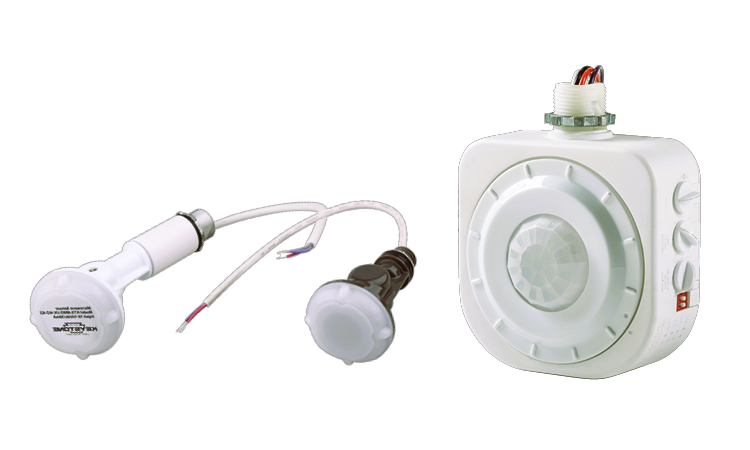Smart home technology has revolutionized the way we interact with our homes, offering convenience, energy efficiency, and enhanced comfort. One area where smart home technology has made significant strides is in the realm of heating systems. By integrating occupancy sensors into smart home heating systems, homeowners in Calgary can experience improved energy savings and a more comfortable living environment. In this article, we will explore the impact of occupancy sensors on smart home heating and the benefits they bring.
What are Occupancy Sensors?
Occupancy sensors, also known as motion sensors or presence sensors, are devices that detect the presence or absence of people within a space. These sensors utilize various technologies, such as infrared, ultrasonic, or microwave, to detect motion or changes in the environment. When combined with smart home heating systems, occupancy sensors can optimize heating patterns based on occupancy and activity levels in different areas of the home.
How Do Occupancy Sensors Enhance Smart Home Heating?

- Energy Efficiency: Occupancy sensors play a crucial role in improving energy efficiency by ensuring that heating is only activated in occupied areas of the home. Traditional heating systems often rely on manual adjustment or pre-set schedules, resulting in unnecessary heating of unoccupied spaces. Occupancy sensors help eliminate this energy waste by automatically adjusting heating based on real-time occupancy data. When a room or zone is unoccupied, the sensor communicates with the smart home heating system to reduce or temporarily halt heating, leading to significant energy savings.
- Enhanced Comfort: By incorporating occupancy sensors into smart home heating, homeowners can experience enhanced comfort. Sensors detect human presence and adjust heating levels accordingly, ensuring that occupied spaces are heated to the desired temperature. This responsive heating system eliminates the need for manual adjustments and maintains a comfortable environment, avoiding temperature fluctuations and cold spots. Window sealants and sealants: in the article about Increasing Thermal Insulation.
- Customization and Flexibility: Occupancy sensors offer customization options, allowing homeowners to define occupancy-based heating preferences for different areas of the home. For example, bedrooms can be programmed for lower heating levels during the day when occupants are typically away, while living areas can be prioritized for heating when occupied. This flexibility enables personalized comfort and energy optimization tailored to specific usage patterns.
- Cost Savings: The combination of energy efficiency and customized heating patterns leads to cost savings. By eliminating wasteful heating in unoccupied areas, homeowners can reduce their energy bills significantly. Occupancy sensors ensure that heating is focused on occupied spaces, optimizing energy consumption without sacrificing comfort.
Integration with Smart Home Systems
Occupancy sensors are typically integrated into broader smart home systems, allowing for seamless control and automation. These systems may include smart thermostats, home automation hubs, or dedicated smart home heating systems. By integrating occupancy sensors into the smart home ecosystem, homeowners can benefit from centralized control, remote access, and automated scheduling of heating based on occupancy patterns.
Considerations and Best Practices

When incorporating occupancy sensors into smart home heating systems, it is essential to consider the following:
- Placement: Proper sensor placement is crucial to ensure accurate detection. Sensors should be strategically positioned to cover the intended area effectively, avoiding obstructions that may hinder detection accuracy.
- Sensitivity Settings: Occupancy sensors often offer sensitivity settings to adjust the detection range and responsiveness. Optimize these settings based on the layout and usage patterns of each room to achieve the desired balance between energy savings and comfort.
- Calibration and Testing: Regular calibration and testing of occupancy sensors are important to maintain their effectiveness. This ensures that sensors accurately detect occupancy and relay information to the smart home heating system.
To learn more about energy efficiency standards and regulations in Canada, you can refer to the official website of the Government of Canada: Energy Efficiency.
In conclusion, occupancy sensors have a significant impact on smarthome heating systems, providing improved energy efficiency, enhanced comfort, and cost savings. By automatically adjusting heating based on real-time occupancy data, occupancy sensors eliminate energy waste in unoccupied areas and ensure that occupied spaces are heated to the desired temperature. With seamless integration into smart home systems, homeowners can enjoy centralized control, automation, and personalized heating preferences. Proper sensor placement, sensitivity settings, and regular calibration are important considerations to optimize the performance of occupancy sensors. By leveraging the benefits of occupancy sensors, homeowners in Calgary can achieve a more efficient and comfortable living environment while reducing their energy consumption and costs.
